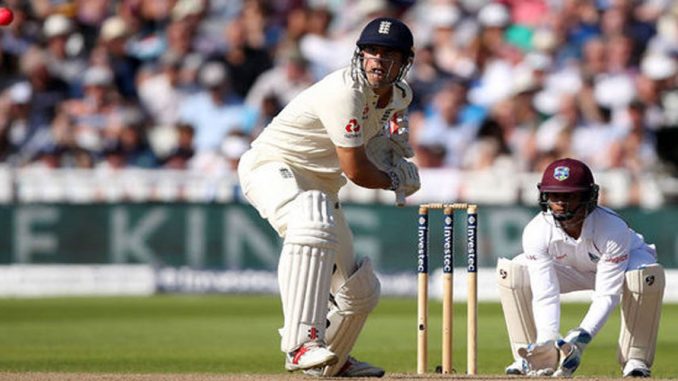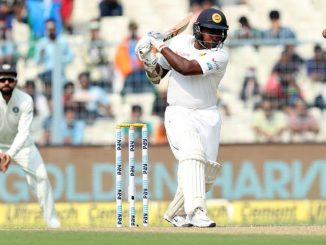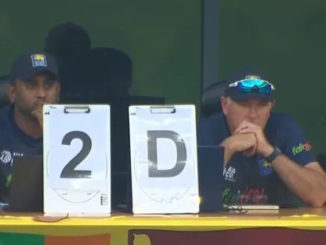
After some weeks in the jungle, Philip Halden decided the best thing to do was teach his kidnappers to play cricket. Halden, a 48-year-old engineering consultant from Stoke-on-Trent, was snatched while he was working in Bogota in 1996. He persuaded one of the guards to lend him a machete, and took what he described as “great pains” to carve a “really heavy Gooch-type bat” and a whole batch of balls, then set about instructing them in the Laws. The guerrillas were Marxist-Leninists and neither they nor his fellow captives, a Dane and a Colombian, particularly enjoyed the game, except in that it took so long to play it killed a lot of time. It was eight months before the three were finally freed.
This, then, was a rare case of strangers to the game finding its length to be the most appealing thing about it. Nothing about Test cricket seems to boggle newcomers to it quite like the fact it lasts so long, which is the very thing those of us who love it like the most. “I hardly think,” Tom Stoppard put it when he first saw live baseball, “that I can be expected to take seriously a game which takes less than three days to reach its conclusion.” Test matches have, of course, been known to go on more than twice as long without finishing. The Beckettian timeless Test between England and South Africa in 1939 lasted 11 days before they finally called it all off.
Time was when Tests were scheduled to last three, four, or many more days. Five days, the length of a working week, has been the standard since 1979. The only exception since the ill-starred Super Test between Australia and the Rest of the World in 2005. That was scheduled to last six, but finished in three-and-a-half. It was supposed to be the first in a series, repeated once every four years, but the idea was abandoned exactly one hour after the inaugural match was over, its only legacy a lingering argument between the ICC and assorted cricket statisticians over whether or not the match should have official status, since the regulations state that “Test matches shall be of five days scheduled duration”.
That’s about to change. Cricket South Africa wants to stage a four-day day-night Test against Zimbabwe this winter. They’re going to petition the ICC for permission at the Chief Executives Conference in New Zealand next week. And given that the game’s many mandarins have been talking up four-day Tests for some time now, it seems CSA is likely to get its way. Officials from England, South Africa, Sri Lanka and New Zealand have all spoken out in support of the idea in the last year or so. Their thinking is that since so few games last more than 400 overs, you can squeeze them down by stretching play later into the evening and making the players get through more overs in the day. This game is likely to be the first of many.
Between them, the executives have put forward a bunch of reasons, all variations on the seven-letter theme mo’ money. New Zealand’s David White wants to do it because it will mean they can fit a three-match series into 18 days, whereas right now, when you add in the rest days between back-to-back matches, they take closer to 26. Sri Lanka’s Thilanga Sumathipala wants to do it because he thinks that if play stretches on for another 45 overs each evening, then the games will pull in bigger crowds after work each night. England’s Colin Graves, who made his name running Costcutter, believes it will reduce expenditure for the grounds and the broadcasters. All three agree that if matches are cut to four days, then they should always run from Thursday through to Sunday.
The players, fans, and, it seems, pretty much everyone else who has publicly discussed the issue seem to be on the other side of the argument. A couple of South Africa’s players came out against it just this week. “I don’t think you should tinker with something that’s not broken,” said Dean Elgar. “There are other formats that are being experimented with. I don’t see why Test cricket should suffer.” And here’s Faf du Plessis: “I am a fan of five-day Test cricket. I believe the great Test matches have gone to the last hour of the last day on day five. That’s what is so special about Test cricket.”
Add to that the MCC, whose new chief executive, Guy Lavender, came out in support of five-day Tests in the Telegraph, and the ICC’s own cricket committee, who decided just a couple of years ago that “Test matches should not be shorter than five days”, with the caveat that “the game will need to be open to considering proposals in the future that look to enhance the public appeal of cricket’s oldest format.” Aside from the brute economics of it, this seems to be the key argument for shortening Test cricket.
Something has to be done! And this it seems, is what the administrators have decided something should look like.
They say that fewer Tests go to a fifth day, which is true, but around six out of every 10 played still do. And the best of them, like the Tests between England and West Indies at Headingley, and Pakistan and Sri Lanka in Abu Dhabi, are as good as this game gets, a better advert for it than anything the ICC’s marketing consultants have concocted. There are good arguments for rationalising the calendar and decluttering the fixture list, but the case for cutting off the fifth day’s play is less convincing. Cricket administrators with grand plans are like Greeks bearing gifts. It’s best to be wary. –theGuardian




Be the first to comment